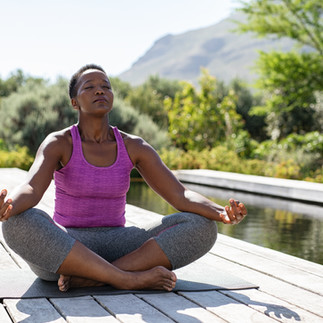Unwind at Home: Transforming Your Space into a Personal Oasis for Total Relaxation
- Audrey Linta

- Jan 5
- 4 min read
In a world that moves rapidly, carving out a space for relaxation at home is more important than ever. With self-care and mindfulness top of mind for many, a dedicated area for unwinding can enhance your well-being significantly. Whether you envision meditating, practicing yoga, or simply curling up with a good book, creating an oasis at home is within your reach. Here are steps to design a serene environment tailored to your relaxation needs.
Understanding the Concept of Healing Spaces
Healing spaces are areas designed to encourage tranquility and well-being. Everyone has a unique vision of calm—some might find comfort in sunlight and lush greenery, while others lean toward soft lighting and soothing colors.
Take time to identify what resonates with you. A survey conducted by the American Psychological Association found that 70% of respondents reported feeling less anxiety in spaces decorated with plants. By choosing elements you love, you foster a sanctuary that supports your mental health.
Selecting the Right Location
Choose a location in your home that sparks joy. This could be a corner in your living room, a nook in your bedroom, or even a patio if you have one.
When selecting your space, consider natural light and privacy. Ideally, you want a spot that’s away from distractions. A study from the University of California revealed that participants felt 30% more relaxed in areas with natural light compared to dimly lit spaces.
Aesthetic Elements to Incorporate
Color Schemes
Colors can significantly influence your mood. To foster tranquility in your healing space, embrace soft and calming colors like light greens, blues, or muted browns. According to a report from Color Psychology, 62% to 90% of initial judgments about a room can be based on color alone. These soothing tones can help create a peaceful retreat.
Textures and Fabrics
Layering various textures can enhance your space's coziness. Use soft blankets, plush rugs, and inviting cushions. For example, a thick, fluffy area rug can make your space feel warm and welcoming. According to the National Sleep Foundation, the right textures can improve your comfort, promoting relaxation.
Natural Elements
Incorporating plants into your sanctuary can transform the atmosphere. Houseplants like snake plants and peace lilies not only purify the air but also create a calm ambiance. If maintenance of live plants isn’t for you, consider hanging artwork featuring nature scenes. Studies show that just looking at images of nature can reduce stress by up to 60%.
Lighting
Lighting sets the mood in any space. Opt for soft, warm lights using lamps, candles, or string lights. Research indicates that exposure to warm, dim lights can lower stress hormone levels by nearly 20%, creating an inviting atmosphere conducive to relaxation.
Sound and Aroma: Enhancing Your Experience
Sound
Introduce soothing sounds that promote relaxation. A survey found that 80% of people feel more at ease in environments where ambient sounds, like water or gentle music, are present. Consider using a sound machine or playing calming tracks that resonate with you.
Aroma
Scent has the power to change the atmosphere rapidly. Essential oil diffusers or scented candles with calming fragrances like lavender or eucalyptus can transform your space. A study from the National Institutes of Health reveals that lavender can reduce anxiety levels by up to 30%.
Incorporating Mindfulness Practices
A healing space invites engagement. Set aside time each day for mindfulness activities that enhance your experience:
Meditation
Spend a few minutes each day meditating in your serene corner. Use comfortable cushions or mats to make the experience enjoyable. Research shows that even brief daily meditation can reduce stress levels and improve focus by 30%.
Yoga
If you practice yoga, transform your healing space into a mini studio. Plenty of resources online offer routines for all skill levels. The physical benefits of yoga are well-documented—it can help lower cortisol levels (the stress hormone) by 25% post-practice.
Personal Touches: Make It Yours
To ensure your healing space feels welcoming, add personal touches. Display items that evoke fond memories or positive feelings, such as:
Photographs: Frame pictures of loved ones or special moments that bring joy.
Art: Include pieces that inspire you or reflect your personality. Art can boost mood and creativity.
Books: Create a small collection of your favorite genres or motivational reads to encourage self-reflection.
Regular Maintenance: Keeping It Inviting
Regular upkeep is essential to maintain a soothing environment. Set aside time each week to refresh your space. Change out scents, rearrange cushions, or tend to any plants to keep the energy flowing.
Seasonal Changes
Consider updating your healing space with the seasons. In warmer months, lean toward vibrant colors and lighter fabrics, while in colder months, opt for deeper hues and cozier materials.
Your Personal Sanctuary Awaits
Creating a healing space at home is a fulfilling journey toward self-care and relaxation. By choosing soothing colors, adding natural elements, and incorporating mindful practices, you can turn your environment into a true oasis. Remember that your sanctuary should reflect who you are and meet your unique needs.
So, take a moment to carve out a special area just for you. Step into your personal oasis where relaxation and wellness await. Unwind, recharge, and embrace the peace your home can provide. Your journey to tranquility begins here!




















Comments